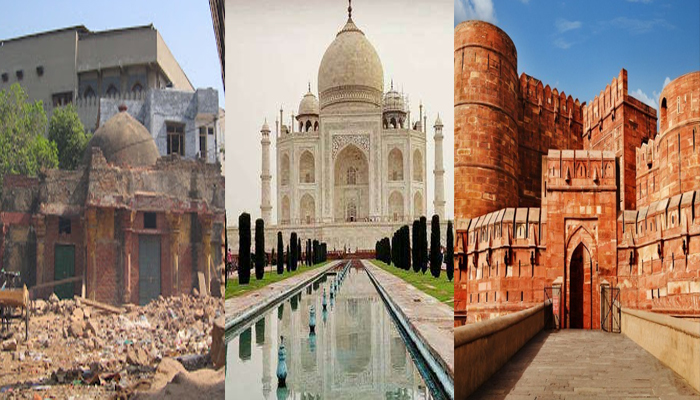
By Sahil Sharma: India, with its rich tapestry of history and culture, boasts an impressive array of historical monuments that reflect the grandeur of ancient civilizations. Among these, Delhi, the capital, stands out, echoing the stories of empires through its majestic forts, intricate temples, and opulent palaces. However, beneath this facade of historical pride lies a disturbing reality: many of these treasures are rapidly deteriorating, caught in a web of neglect, urbanization, and conflicting narratives about their significance.
The Struggle for Preservation
As urban development accelerates, many heritage sites are facing threats from encroachment and illegal constructions. The Lal Mahal, a 13th-century structure in the Nizamuddin Basti area, exemplifies this neglect. Once a significant site, it is now largely forgotten, hidden from the eyes of passersby. Architect A G Krishna Menon highlights the alarming state of heritage conservation in India, where countless sites are unrecognized and teetering on the brink of extinction. This situation is not limited to Delhi; it reflects a national crisis. Across India, historical marvels are succumbing to the pressures of modernity. For instance, the Shamsi Talab in Mehrauli has been reduced to a dumping ground, its historical significance overshadowed by pollution and decay.
Recent events and challenges of Climate
The pressures of urbanization are evident in many cities, where rapid development often comes at the expense of historical sites. One of the world’s most iconic monuments “The Taj Mahal”, recently faced an unusual challenge as incessant rainfall in Agra over three days led to water leakage from its main dome. A video showing a garden within the Taj Mahal premises submerged in rainwater quickly went viral, drawing the attention of tourists and raising concerns about the monument’s condition.
Apart from that a video of a Plant growing from within the dome of Taj Mahal also surfaced the internet, however it was then carefully removed from there. While authorities assured that the structure remained sound, such incidents underscore the vulnerability of heritage sites to climate change and extreme weather patterns. In Agra, not only the Taj Mahal but also Agra Fort and other historical structures suffered damage from recent flooding. These incidents highlight the urgent need for effective monitoring and restoration practices, especially as climate change threatens to exacerbate existing vulnerabilities.
The Battle of Narratives
Complicating the preservation efforts are conflicting narratives surrounding India’s heritage. The ongoing debate about the Purana Qila’s identification as Indraprastha illustrates the clash between historical facts and cultural mythology. Many citizens feel disconnected from certain monuments, viewing them as relics of invasions rather than integral parts of their cultural identity. This disconnect can lead to apathy towards preservation efforts, as people fail to see the value in these historical sites.
The Role of Government and Community
Despite some efforts by the Archaeological Survey of India (ASI) to protect designated monuments, the reality is grim. Reports indicate that around 50 of India’s 3,693 protected monuments are “missing,” with many others in disrepair due to insufficient funding and poor local supervision. The disparity between well-known sites like the Taj Mahal and lesser-known structures is striking; while the former receives significant attention, the latter often languishes without proper care. Experts argue that preservation must become a shared responsibility. Aishwarya Tipnis, a conservation architect, emphasizes that citizens can play a crucial role in protecting municipal-level heritage. Engaging local communities and raising awareness about the significance of these sites can strengthen collective efforts towards conservation.
Toward a Sustainable Future
As India navigates the challenges of modernity, it must prioritize the preservation of its historical treasures. This involves not only government intervention but also community involvement and public education. A collaborative approach, where citizens, historians, and conservationists work together, is essential to safeguarding the nation’s cultural legacy.
The ongoing crisis serves as a wake-up call for India. The fight for heritage conservation is about more than preserving individual monuments; it is about maintaining the cultural identity and historical narrative of a nation. By recognizing the shared responsibility in this endeavor, India can ensure that its past continues to inspire future generations.
